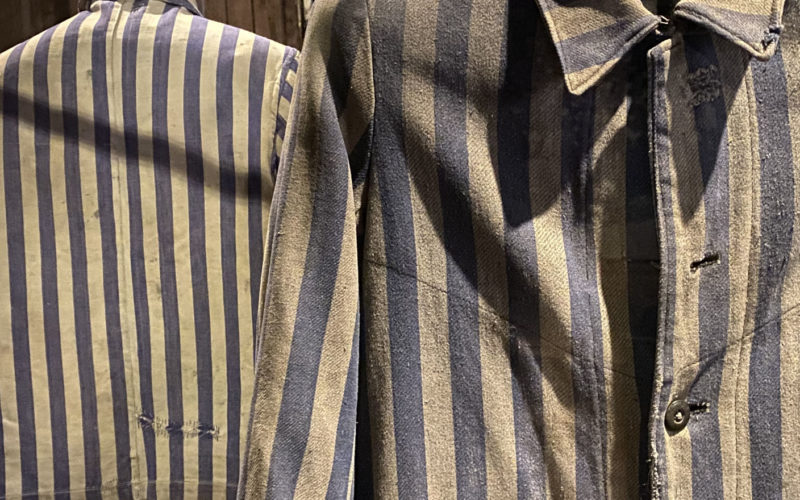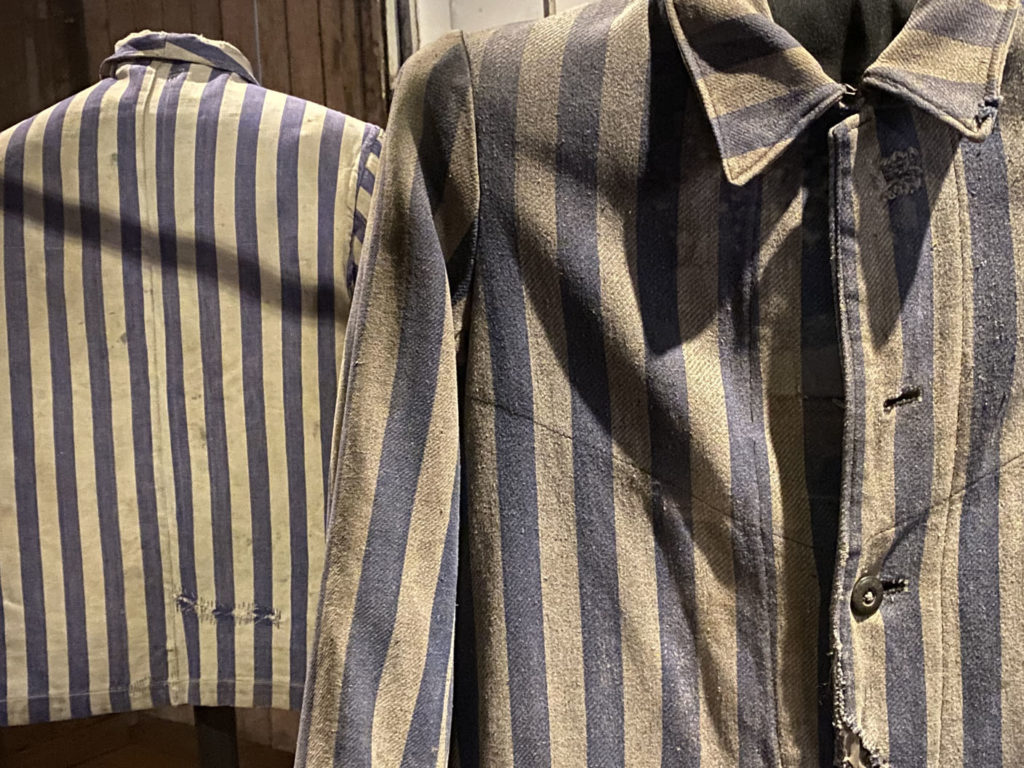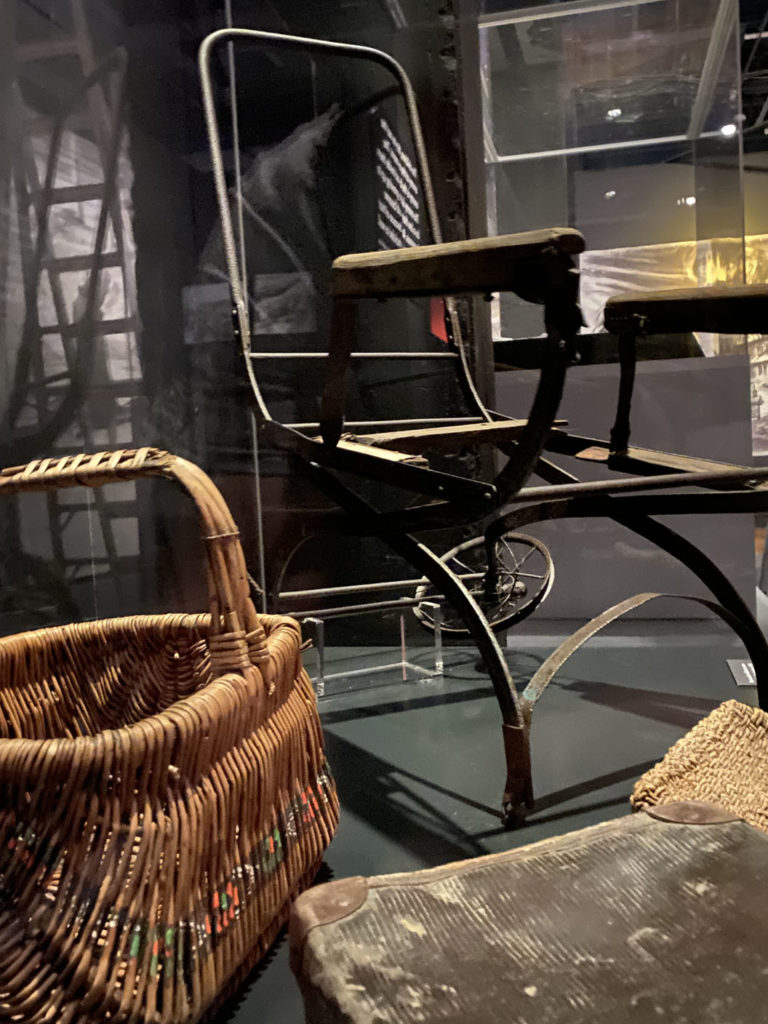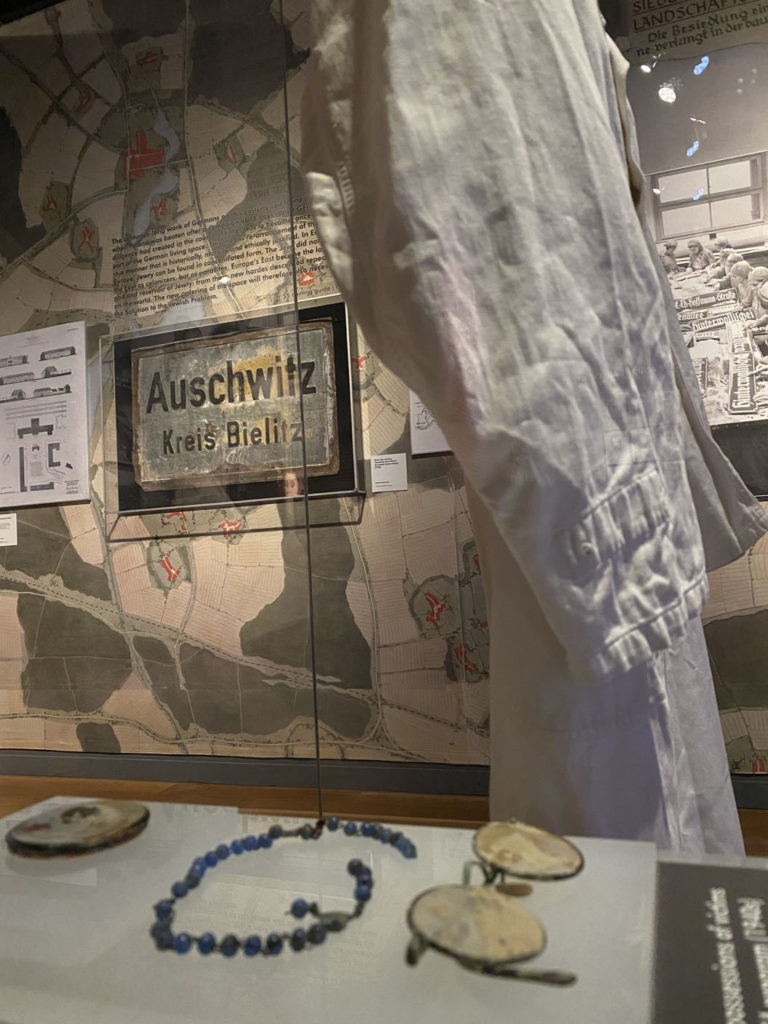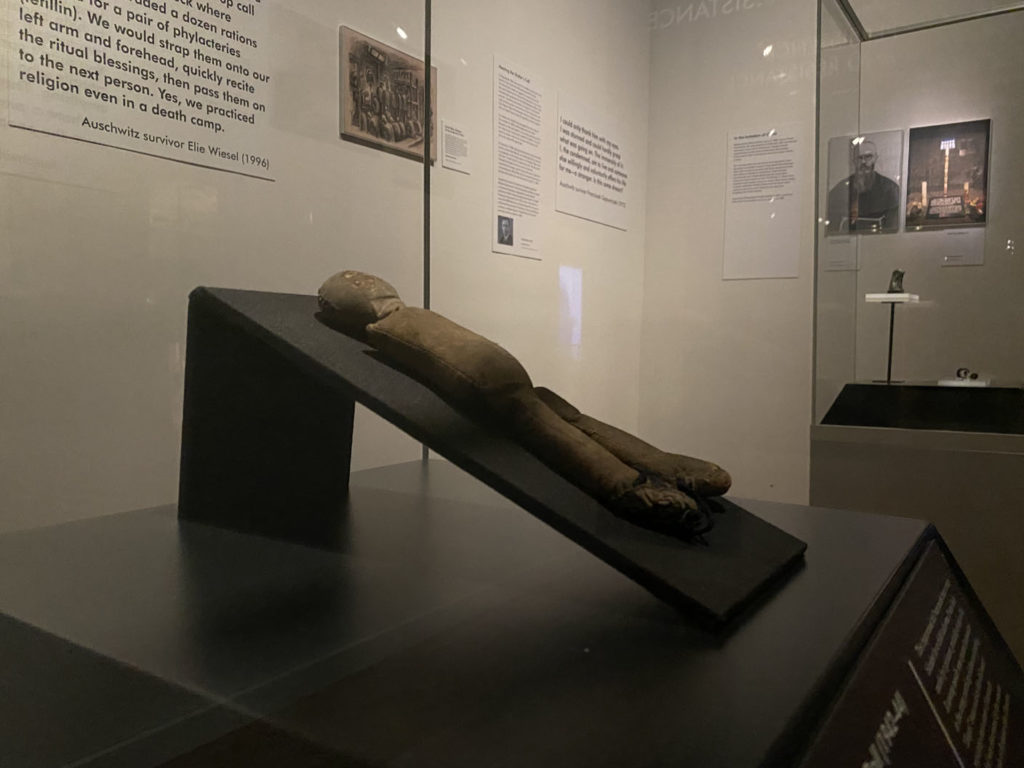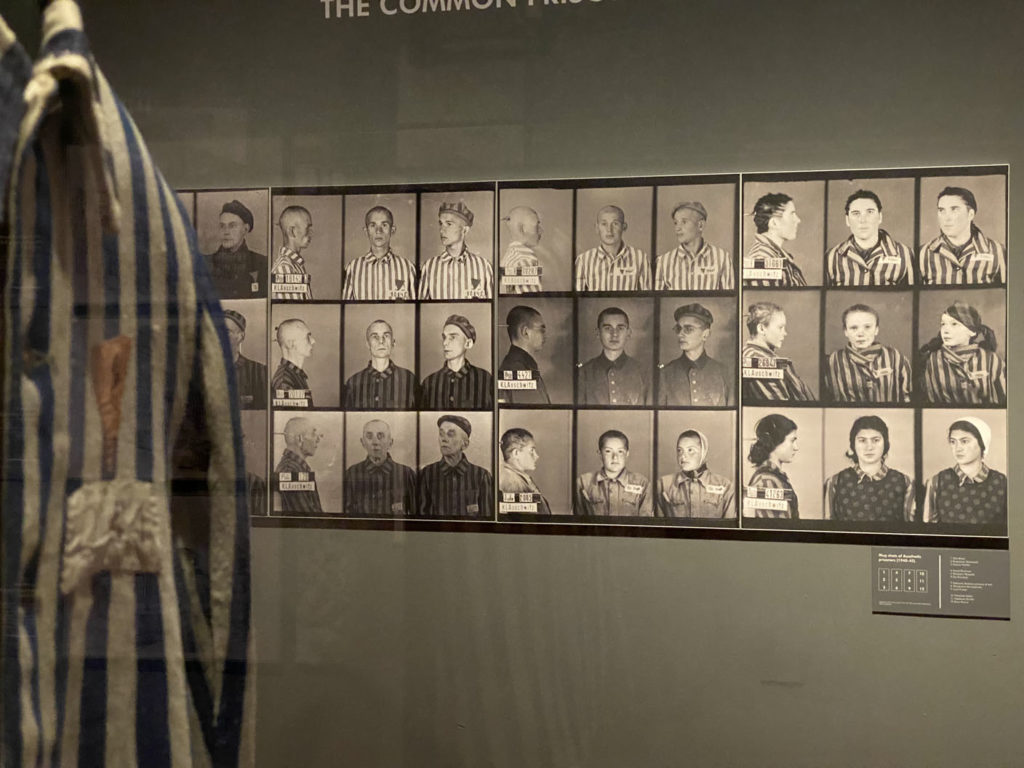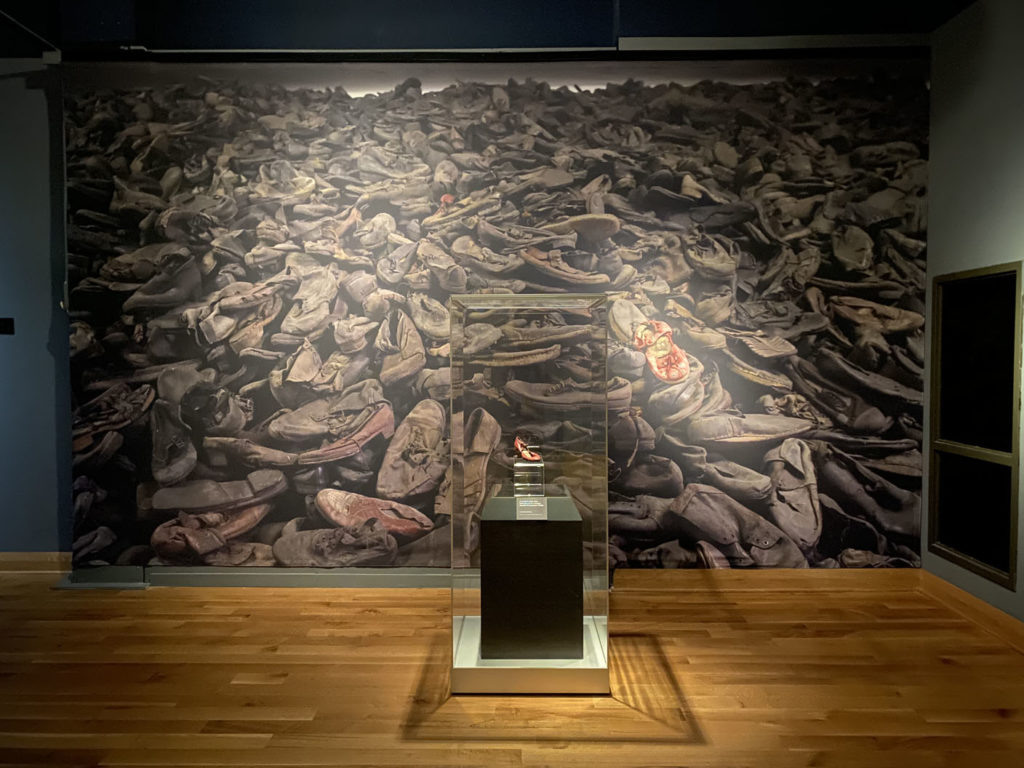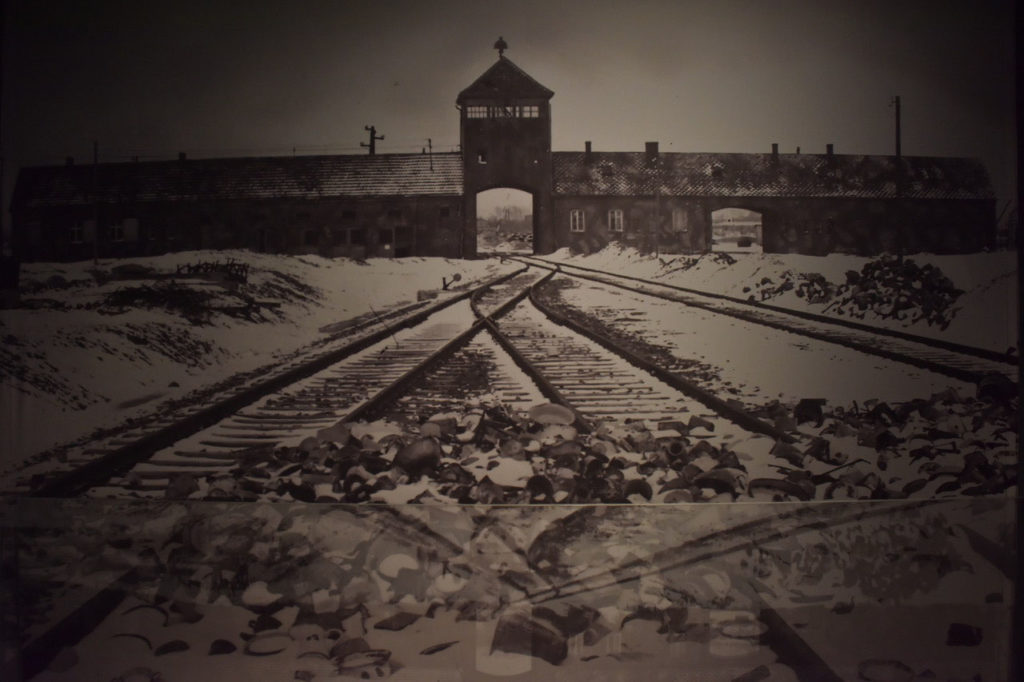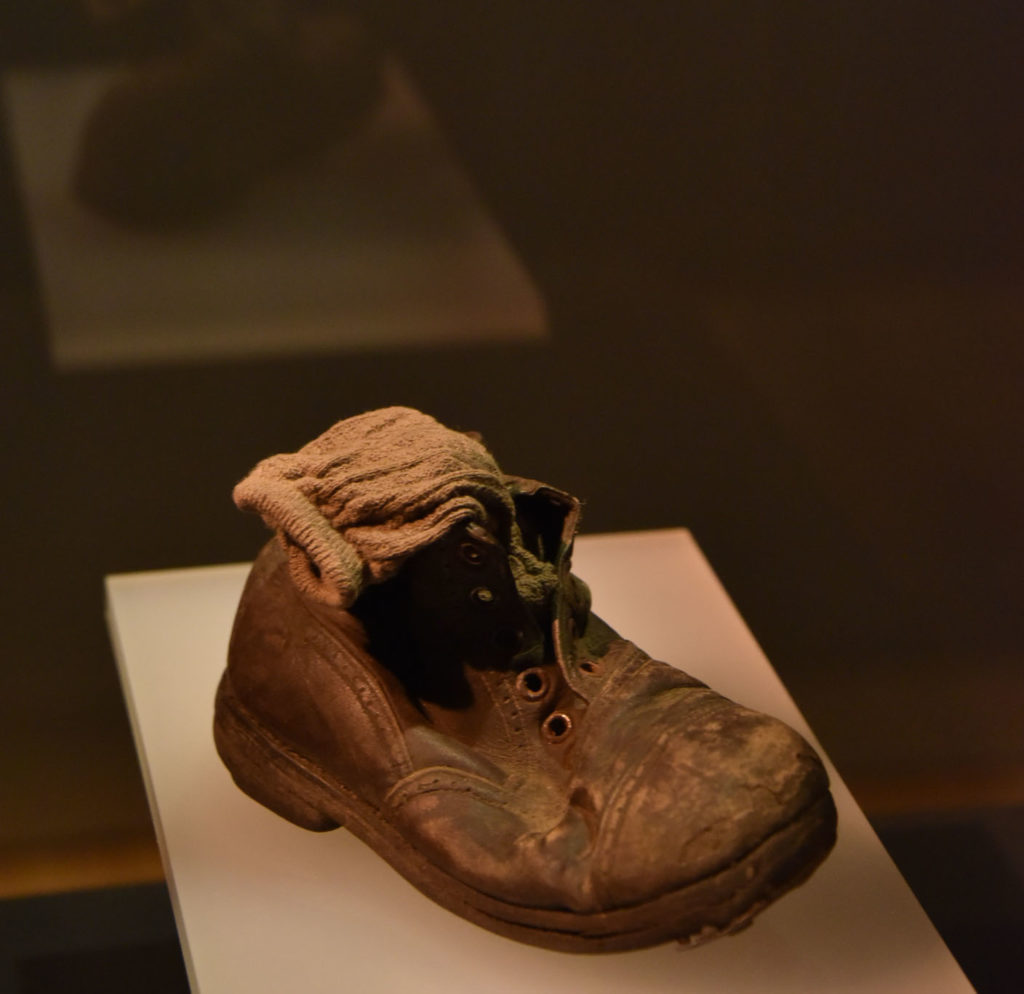BECCA MARTIN-BROWN
bmartin@nwaonline.com
“Auschwitz did not start with gas chambers. Hatred does not happen overnight; it builds up slowly among people. It does so with words and thoughts, with small everyday acts, with prejudices. When we had the vision to create the exhibition, we conceived its narrative as an opportunity to better understand how such a place could come to exist, and as a warning of where hatred can take us to. Therefore, it is of vital importance to remember the road that led to Auschwitz and the consequences it had.” — Luis Ferreiro
Luis Ferreiro is the driving force behind an exhibition currently on show at Kansas City’s Union Station. Titled “Auschwitz. Not long ago. Not far away,” it was nearly six years in conception, and Kansas City is the last of only two stops it will make in the United States. Since it opened June 14, it has been sold out to maximum capacity most days, and Ferreiro advises visitors they’ll leave with more questions “than simple and digested answers.”
“There are many different layers in the exhibit, and it will be up to each visitor to decide how deep they will like to go in the understanding of what Auschwitz was, how such a place came to exist and what it means for us today,” he says. “In that regard, the exhibition is first and foremost a tribute to the memory of the victims. But we also hope this stay in our very recent past gives visitors the tools to critically analyze our own present.”
The Conception
“Auschwitz. Not long ago. Not far away.” features more than 700 original artifacts, 400 photographs and unpublished memoirs, many of which have never been available to the public. The idea for the exhibition started with Ferreiro, whose family founded an exhibition company called Musealia 21 years ago in their home country of Spain. It is the only career Ferreiro, who was born in 1982, has ever known.
“It has been an incredible journey full of learning and creativity, that gave us also the chance to work with the best professionals in the different topics we created exhibitions about,” he says. “From historians to architects, conservators or designers, leading groups of very talented individuals into a vision for a particular exhibition has been an incredible experience.”
Everything changed for the family when Luis’ brother Jesus died of a sudden heart attack in 2008 at the age of 26.
“One year later, in April in 2009, I was given for my birthday the book ‘Man in Search of Meaning’ by Viktor Frankl,” Ferreiro remembers. “Although it took me some months to make the decision to read it, I did so that summer, and I was profoundly touched by the way he narrates his experience of being deported to several Nazi camps, specially Auschwitz. The moment I closed the book, I felt an urgency to create an exhibition that would explain the story of Auschwitz — somehow, to take Auschwitz to the world. To do something.
“The story of creating the exhibition is full of pain — for the subject matter and the relationship to my brother — but it is also a sincere story of gratitude,” he adds. “It would be impossible to name all the institutions and individuals who decided to come together to make the exhibition possible. The Auschwitz-Birkenau State Museum is not only the co-producer of the exhibition, but also the source of most of the original objects displayed. And as important as that, they made available their expertise, historical research and knowledge.”
The exhibition also includes loans from more than 20 museums, institutions and private collections from all over the world, Ferreiro clarifies, and although it will continue to tour for several years in other countries after the Kansas City engagement ends in January 2022, “it is in its own nature to come to an end.”
“The artifacts belong to permanent collections of different museums and, therefore, the exhibition cannot be accommodated into a permanent home,” he says. “That is why we insist in every city to take advantage of the unique opportunity it means to be able to encounter these objects and the narrative of the exhibition. I encourage [everyone] to take a courage step and visit the exhibition.”
The Exhibition
George Guastello, president and chief executive of Union Station, reminds exhibit goers that displaced people have often walked the hallways of what was once the grand hub for railroad travel in the Midwest, as did statesmen like Harry Truman and Dwight D. Eisenhower and troops leaving to defend America in World War II. Rather than just a story of horror, he says, “Auschwitz. Not long ago. Not far away.” is about people, “the perpetrators and the prisoners, and the juxtaposition of their stories.”
“Now it is our goal to ensure it never happens again,” Guastello says. “We always had a feeling that the story would resonate. But I have been so humbled by the response in the community. What better time for this exhibition than when we see what’s happening in our world today? It speaks to the souls of the people. We’re on a mission, not to sell tickets but to change the world one person at a time. I am humbled to even be in the presence of what [Luis Ferreiro] created.”
The Midwest Center for Holocaust Education is a partner in the exhibition, and CHE Executive Director Jessica Rockhold says having the Holocaust artifacts in Kansas City is “incredibly significant and an unprecedented opportunity.”
“The importance of an exhibition like ‘Auschwitz. Not long ago. Not far away.’ cannot be overstated,” Rockhold said in a September 202o story in The Kansas City Jewish Chronicle. “Most people will never have the opportunity to travel to Auschwitz and other Holocaust sites. This exhibit offers access to those precious artifacts that personalize and make tangible the history we learn in books.”
“Nothing can replace a visit to the authentic site of the biggest crime of the 20th century,” Dr. Piotr Cywinski, director of the Auschwitz-Birkenau State Museum, said in the same story in The Chronicle. “But this exhibition can become a great warning cry for us all and allow people who may never get the chance to visit an opportunity to see and experience it like never before.”
The Experience
According to The Chronicle, the exhibit “explores the dual identity of the camp as a physical location — the largest documented mass murder site in human history — and as a symbol of the borderless manifestation of hatred and human barbarity.”
Among the 700 artifacts included in the exhibition are hundreds of personal items — such as suitcases, eyeglasses and shoes — that belonged to survivors and victims of Auschwitz, The Chronicle catalogs. where is the closing quotation for this one? “Other artifacts include concrete posts that were part of the fence of the Auschwitz camp; fragments of an original barrack for prisoners from the Auschwitz III-Monowitz camp; a desk and other possessions of the first and the longest serving Auschwitz commandant, Rudolf Höss; a gas mask used by the SS, Hitler’s elite guard; Picasso’s lithograph “Head of the Auschwitz prisoner”; and an original German-made Model 2 freight wagon used for the deportation of Jews to the ghettos and extermination camps in occupied Poland.
But perhaps more important is information about what The Chronicle calls “the development of Nazi ideology and the transformation of Auschwitz from an ordinary Polish town known as Oswiecim to the most significant Nazi site of the Holocaust — at which approximately 1 million Jews, and tens of thousands of others, were murdered.” The Chronicle points out that victims were not only Jews but political prisoners, Roma (also known as Gypsies), Soviet POWs, Jehovah’s Witnesses and anyone the Nazis labeled as “homosexual,” “disabled,” “criminal” or “inferior.”
Mike Shores, writing in the July 24, 2021, edition of the Joplin (Mo.) Globe, says the impact of the exhibit came home to him with three artifacts — a heavy door with a viewing hole, used to see if the prisoners in the gas chamber were dead yet; a cage from inside the gas chamber into which the poison pellets were dropped, enclosed so prisoners could not try to stop the fatal gas; and “the well-made shoe of a child about 4 years old.”
“It was,” he writes, “excavated from the ruins of the gas chambers at Auschwitz, though it could have come from any number of such camps. Carefully placed inside the shoe was a sock. It was found this way. Perhaps the mother or a thoughtful child had placed it there to ensure it did not get lost, so they could put it back on when they returned from their ‘shower.’ By this time, the mother was probably beginning to doubt that they would be coming back. But she carefully shielded her child from reality, and placed the shoes and other items carefully beneath their numbered coat hook.”
“Each object in the exhibition is unique,” says Ferreiro, director of “Auschwitz. Not long ago. Not far away.” “They are all fragments of history and each one of them has its own echo. It is fascinating to see how visitors establish different relationships with them. For many, personal items from the victims — little shoes, glasses, suitcases, mirrors — are profoundly touching. Their nature helps them easily identify with them. And for others, iconic objects will become the ones that get to them: posts from the camp, a section of a barrack, elements from the perpetrators….
“It is impossible to predict which one will be more powerful for each one of us,” he concludes. “I can only say that we present them in a way that allows each object to speak for itself, to tell their story. And, whenever possible, we identify the original owner. The authenticity that the objects bring makes the exhibition a very personal experience for visitors, and an invitation for reflection.”
__
FAQ
‘Auschwitz. Not long ago. Not far away.’
WHEN — Through March 20, 2022
WHERE — Union Station, 30 W. Pershing Road in Kansas City, Mo.
COST — $15-$25
INFO — https://unionstation.org/event/auschwitz/

